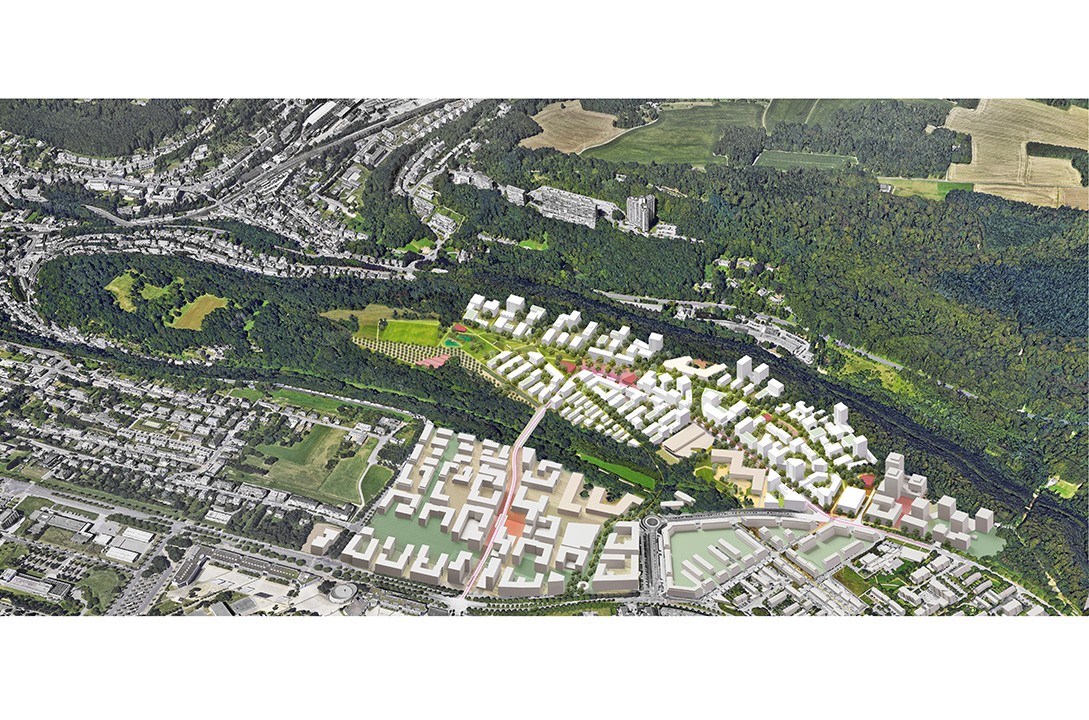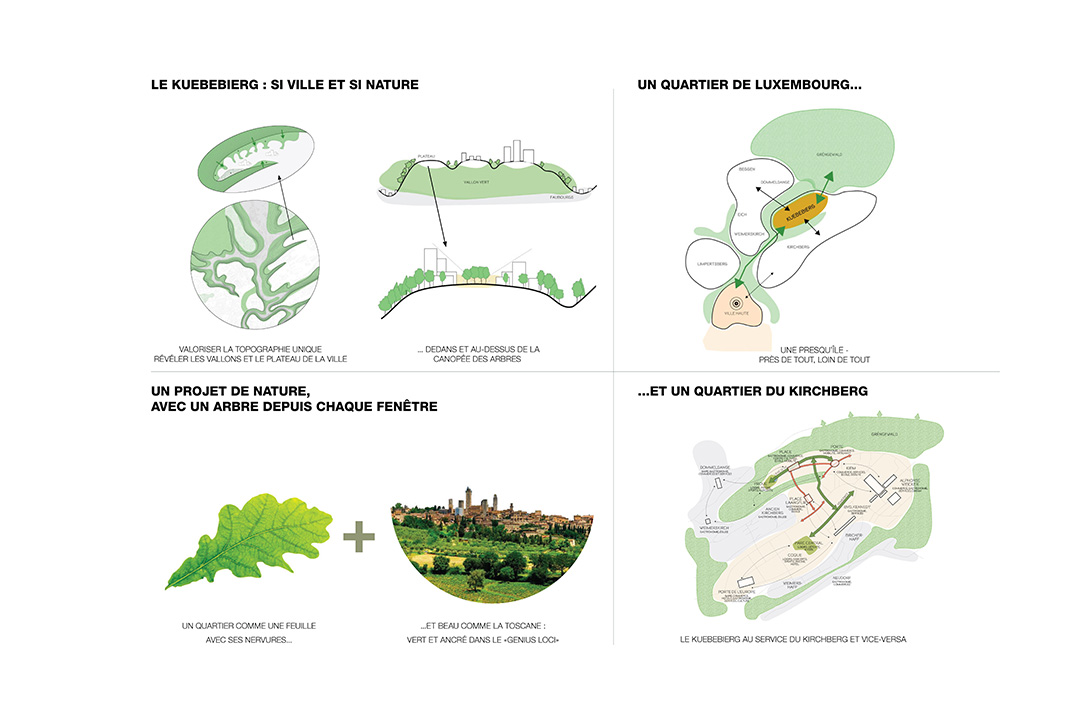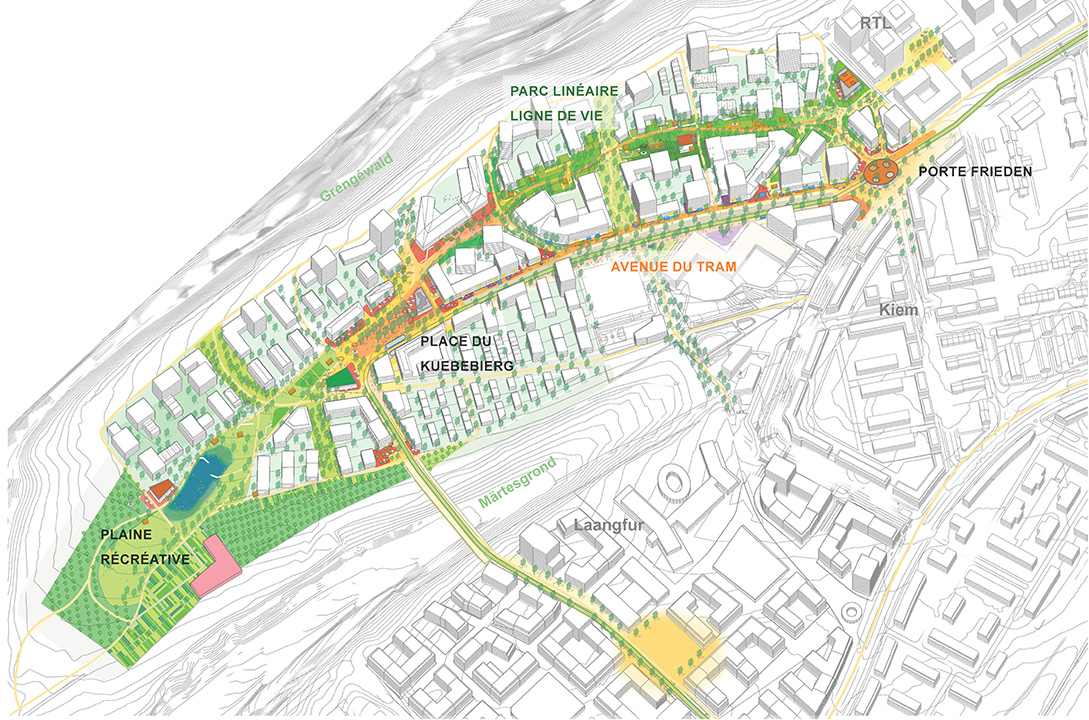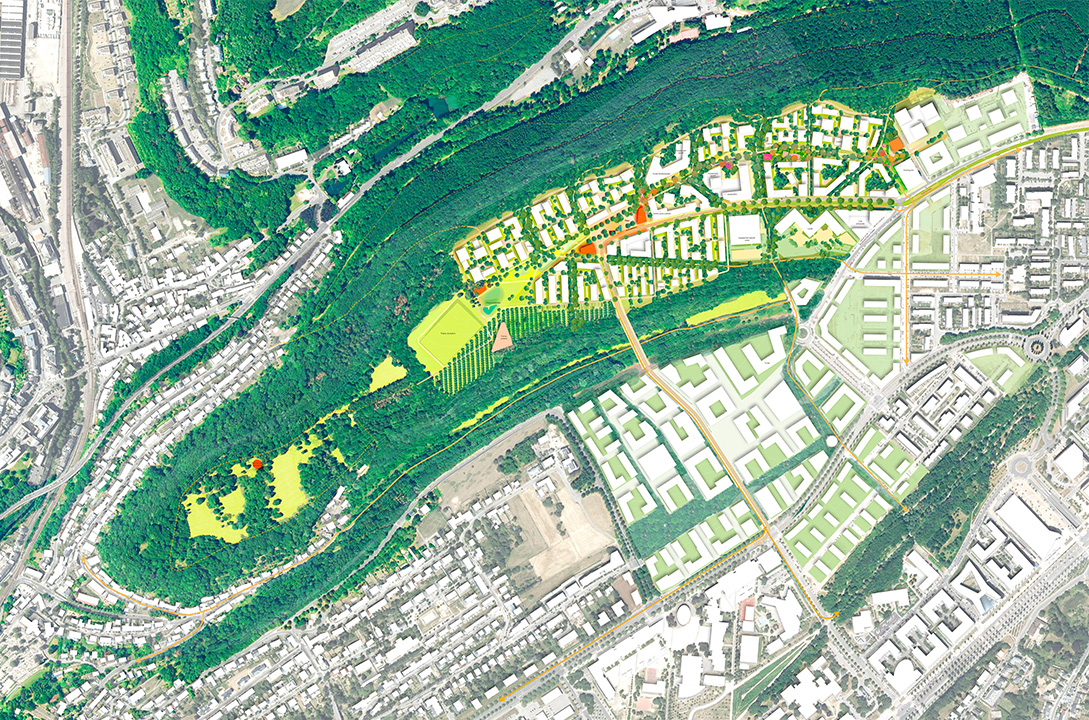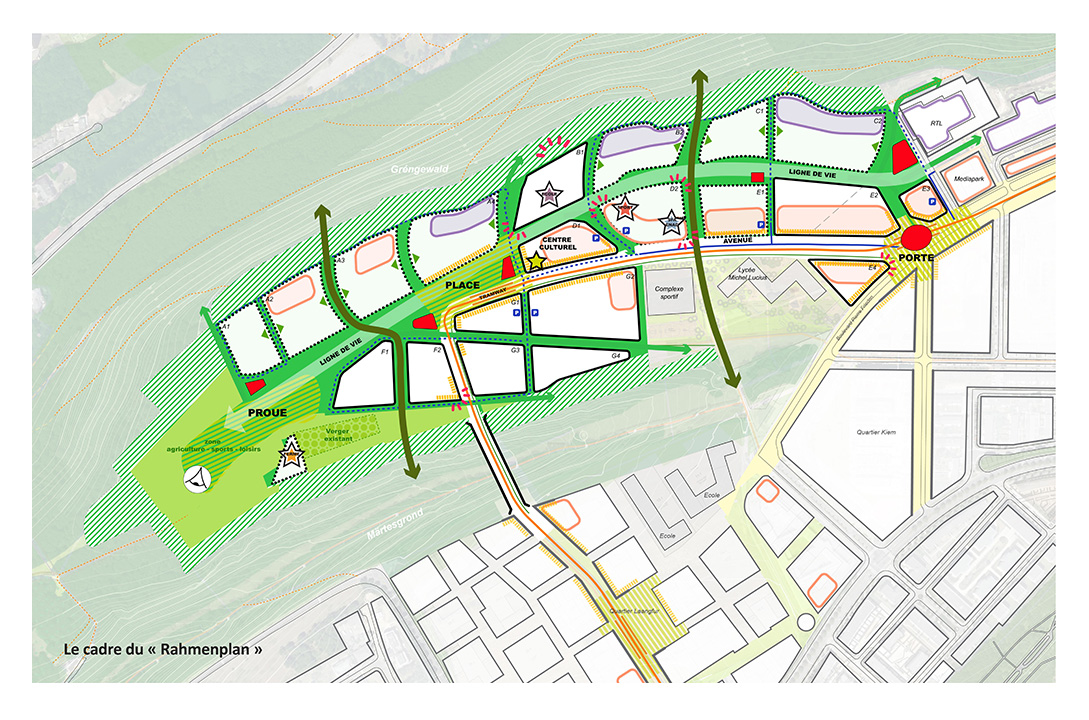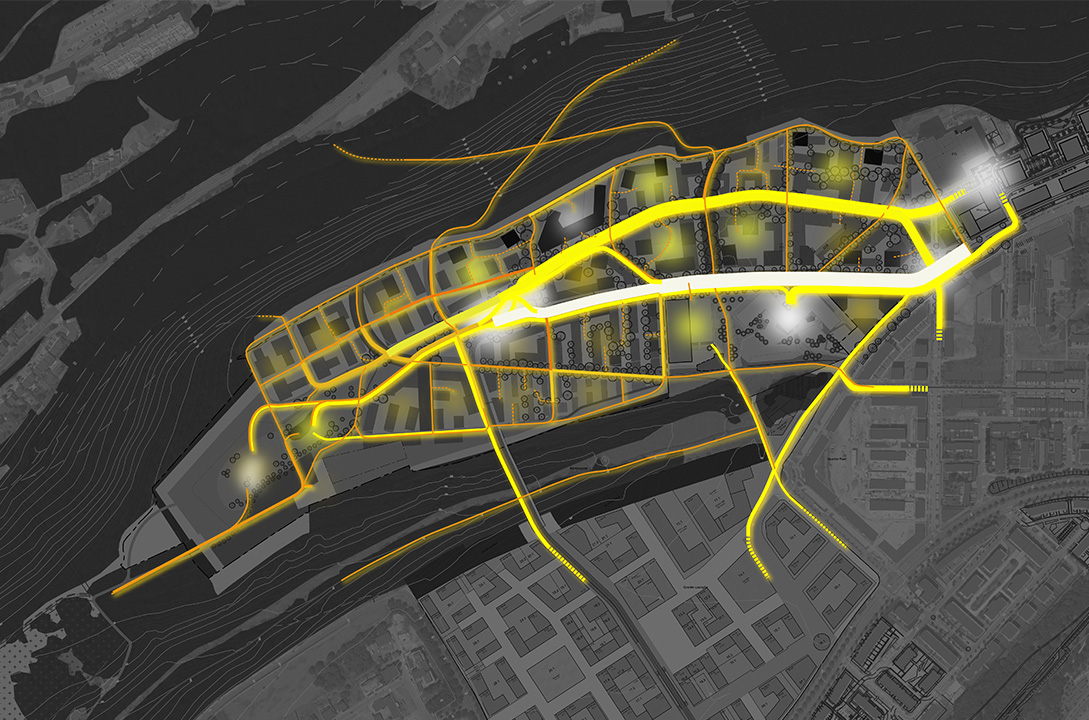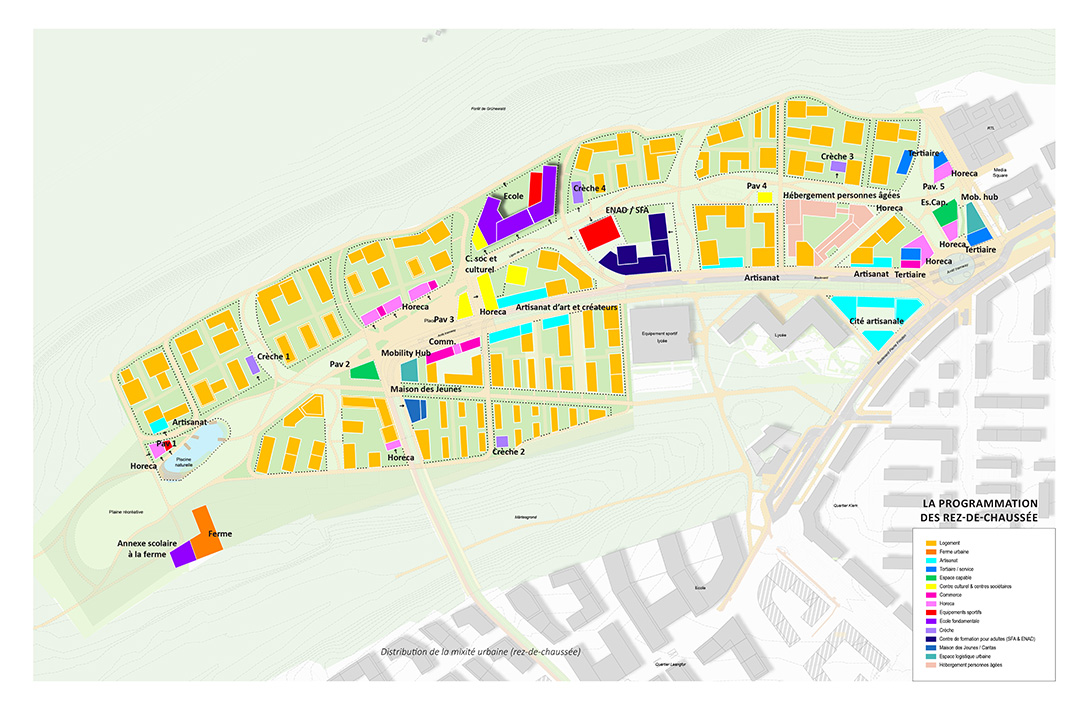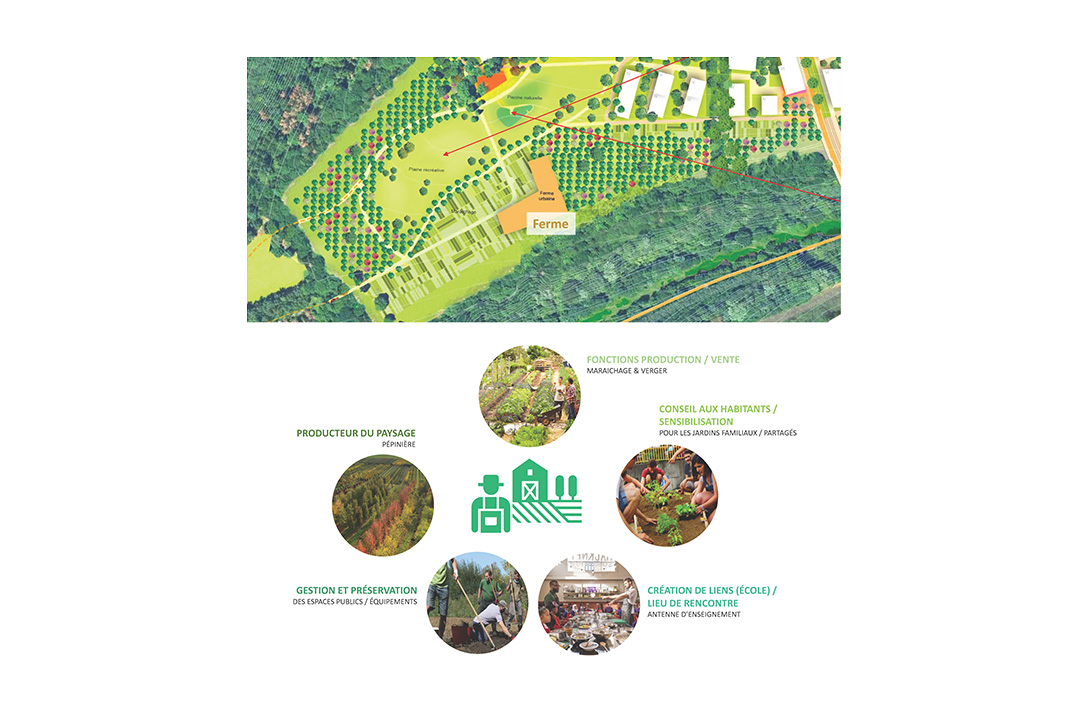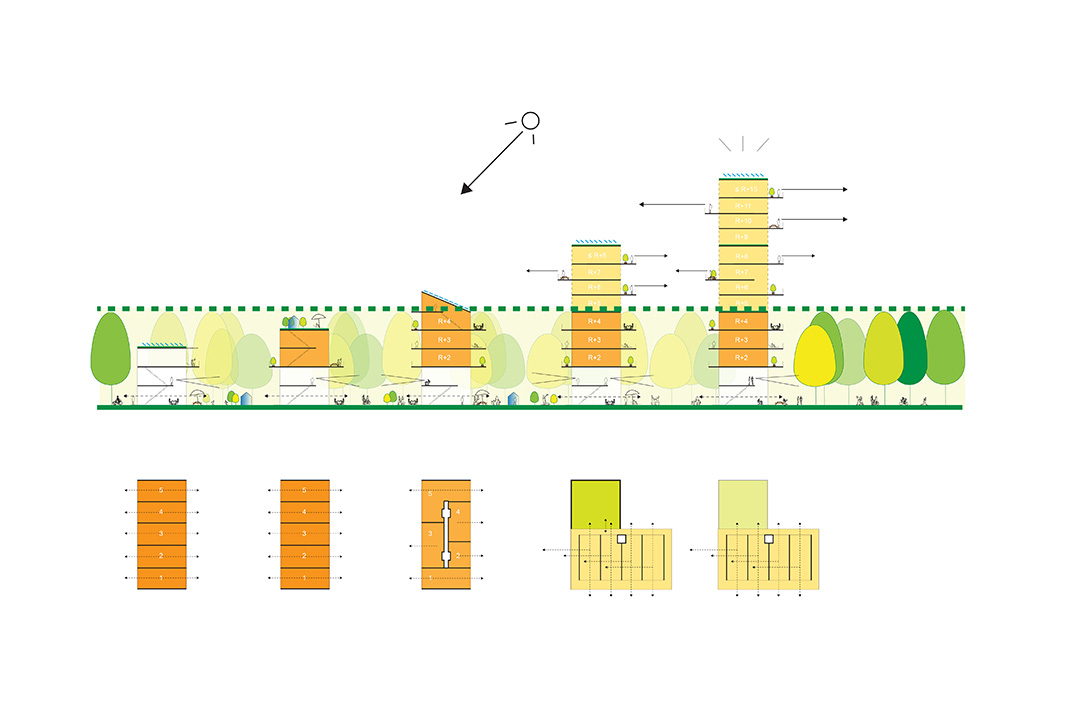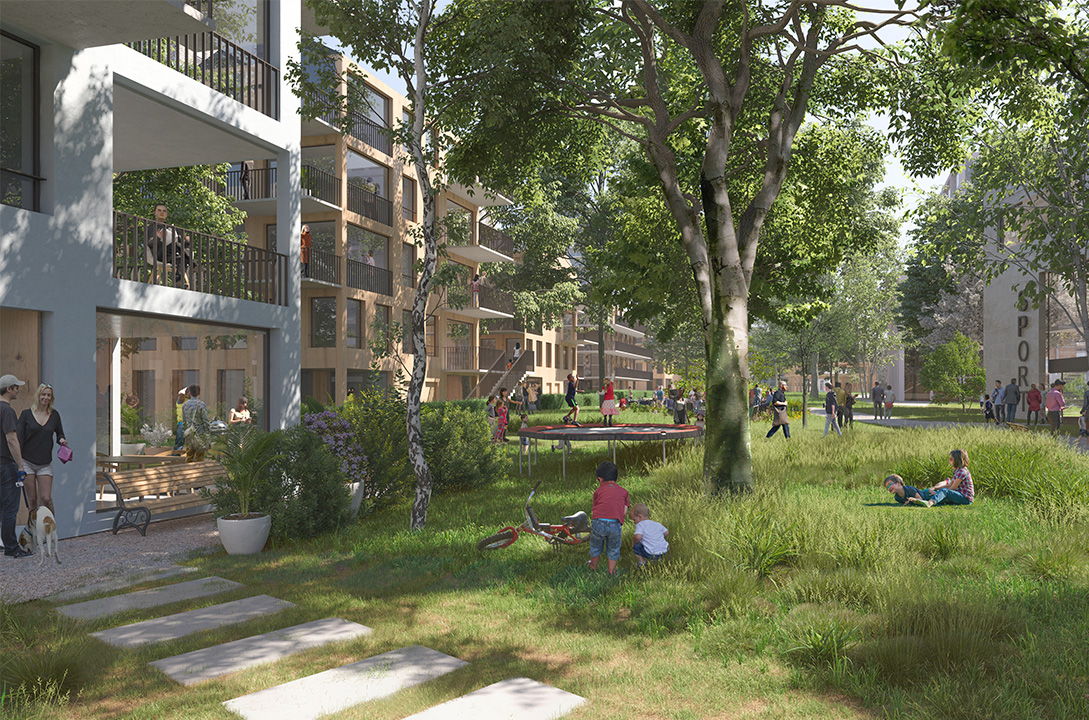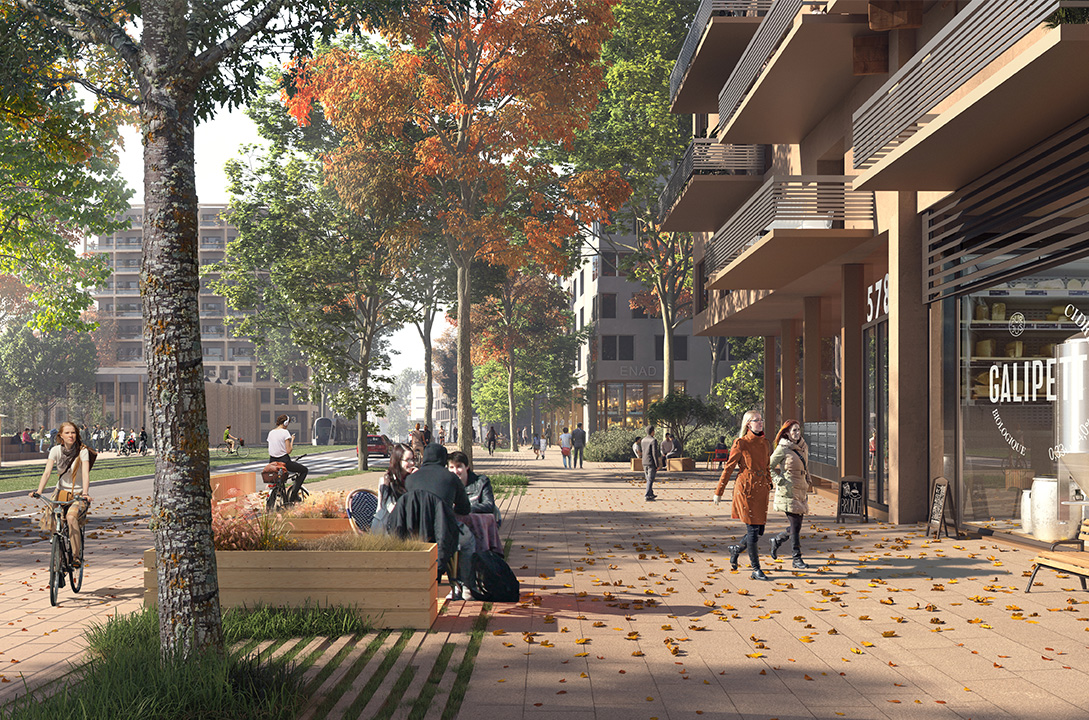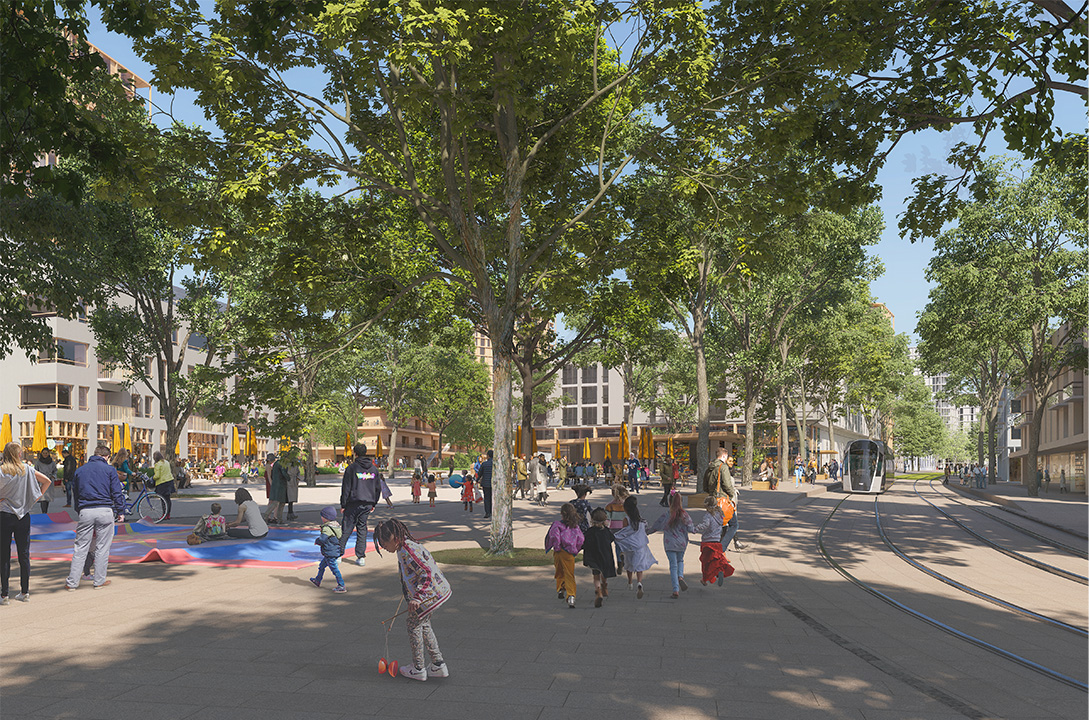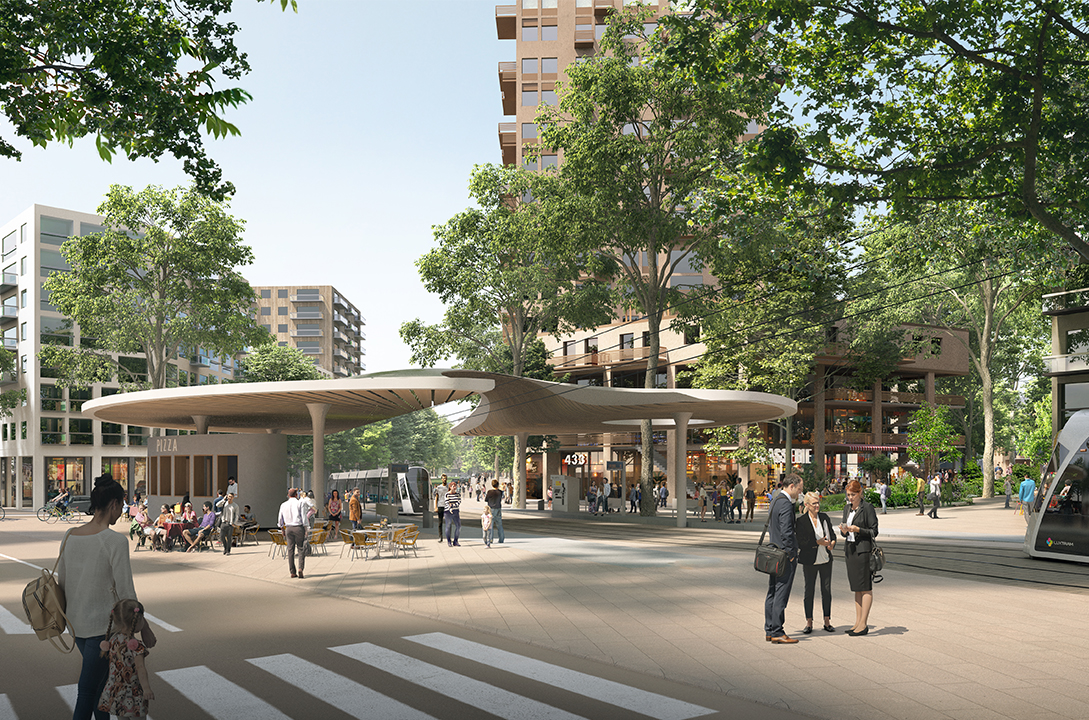client: Fonds Kirchberg
team: Güller Güller architecture urbanism + Zeyen + Baumann + Atelier Alfred Peter + Etienne Ballan + RR&A + Zefco + Ecolor + Ville en Euvre + Belvédère
Kuebebierg, an exceptional opportunity to rethink the city
Kuebebierg is part of the Kirchberg plateau, the European institutions district of Luxembourg City, and is intended to consolidate the housing offer of the entire area transforming it from a simple headquarter district into an attractive, contemporary mixed-use development.
It is located on a big agricultural plateau surrounded by a protected forest and offers the exceptional opportunity to rethink the way in which we design and build our cities by simultaneously preserving nature and reintroducing ecological values.
It combines the high intensity of urban life with a strong presence of nature, creating a well-connected district, complementary to existing urban polarities and with a wide range of shared facilities.
The mobility structure is based on pedestrians, bicycles and public transport (and no longer on cars). This is going to become an exemplary model for the entire region of Luxembourg, implementing the quarter-hour city model, short distances and local life.
In addition, Kuebebierg is not conceived as a neighbourhood for a restricted social circle, but as a circular and fair district for all, regardless of social groups, age and economic status.
All these objectives are summarised in four fundamental principles :
- living in the middle of nature
- living an urban, community life with everything in a walking distance
- connecting the residents with the rest of the city
- ensure liveliness from the outset
Living in the middle of nature
Kuebebierg allows to imagine the perfect symbiosis of nature and city: remote on the edge of the Kirchberg plateau, embedded in green valleys and forest, it is at the same time very close to the city centre itself. In the past, nature and city were considered two separate entities that should not merge. In Kuebebierg they are completely interconnected.
The existing topography determines the urban networks and the green corridors. The historic Grengewald forest is brought back to the plateau and becomes an essential component of the future district. The wooded areas are maximised, so that each inhabitant can live in the forest and see a tree from every window. The forest canopy is thus a tool for determining the height of buildings: low typologies that remain below it to promote a natural way of life and taller typologies that crown above it to allow open views on all sides.
An urban farm will play an important role in the identity and functioning of the neighbourhood. It contributes to creating a permeable district in which agricultural areas and public spaces for social and recreational purposes are interconnected. The community life of the inhabitants is strengthened and local production is maximised.
With this, Kuebieberg is a peaceful, human-scale district, in the middle of nature.
Living an urban, community life with everything in a walking distance
Kuebebierg is a dynamic mixed-use district in which all the features of urban life can be found. It is designed around two complementary main axes, the Ligne de Vie and the tram Avenue, that run from east to west and provide connections within the inside and outside. These axes meets at both ends on two urban centralities, the Porte Frieden gateway and the central square "place Kuebebierg". They provide residents with all necessary urban services within walking distance, allowing them to live well even without a car.
The Avenue houses the tram line, as well as the lyceum and all necessary facilities for students. It is accessible to cars and is therefore used to directly cross the district and reach its main points such as the elderly center and the ENAD school for adults, and for all the logistical matters. It is the main address in the neighbourhood.
The Ligne de Vie is a linear parc along which public and common spaces are located. This vibrant, green and welcoming promenade hosts various community amenities in the form of green areas (public, semi-private and private), pavilions, public spaces sports and commercial facilities and a primary school. It animates the neighbourhood and promotes social gatherings and community life at different scales.
Different housing typologies, equally divided between affordable and open market, have been placed around these axes to offer different ways of living and thus increase the social mix in the district. From townhouses, to duplex blocks with shared stairs and high and low collective housing blocks, everyone can find the perfect place to live in this eco-neighbourhood of the future.
Housing programme is dominant in Kuebebierg and therefore 80% of the ground floors are designed as inhabited. This peculiar aspect creates a dynamic interrelationship between public and private domains. The remaining 20% of the ground floors located around the two centralities as well as on the Avenue host lively functions such as commerce, catering, local businesses, coworking, and shared bike services. These spaces are flexible and can be adapted to the needs of future inhabitants in the medium to long term.
Connecting the residents with the rest of the city
Kuebebierg rethinks the mobility network around humans and therefore car access is organized by means of one single access. The district is designed for pedestrians and cyclists, so everything is more quickly accessible on foot or by bike (never by car), and intended for pedestrian comfort. The porosity of the urban fabric makes possible short and safe connecting routes that are accessible to all age groups.
The tram line is also important in the organization of the network, and is conceived as a aggregating element. To this end, the Porte Frieden tram station is designed as a square, a lively covered meeting place.
Car parking is limited to the minimum (0.5 car/apt) and is organized in six shared mobility hubs along the Avenue, located up to 300 meters from the housing blocks and thus generating equal accessibility conditions with the tram offer. The mobility hubs are separated from the residential lots that are accessible by car only for specific purposes (people with reduced mobility, deliveries, waste collection).
Ensure liveliness from the outset
Kuebebierg is not intended to become a suburb extension, but instead a pioneering district proposing an innovative urban concept based on the DNA of the territory.
Seen its size, it will be developed in several phases over time. The intention is to always allow residents, from the outset, to have easy and comfortable access to major facilities and the mobility network. The valorisation of the topography, the presence of the forest, the Avenue and Ligne de Vie are solid elements in each phase of the design. At the same time, however, the district will be flexible and adaptable, adjusted over time according to the real needs of its inhabitants. It is not yet clear how we will live in 2030/2040, so it is necessary to be able to adapt to changing ways of living or future needs.
The first "stone" of the district will be the implementation of the urban farm, orchards and the big park in the west side of the Kuebebierg, as part of the Luga-Luxembourg Garden Exhibition 2025. This first landscape acts as the actual living infrastructure of the future district.

